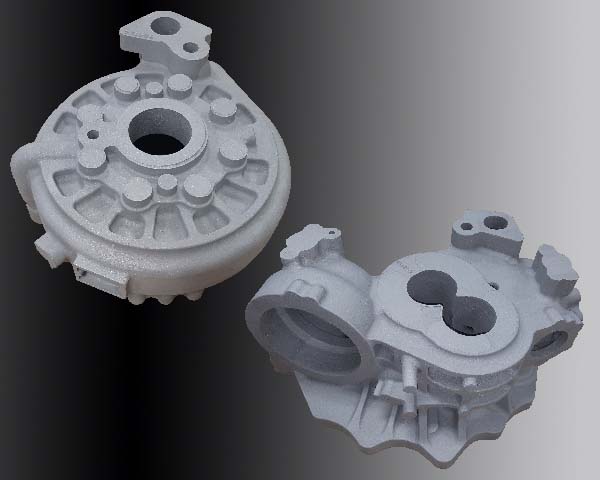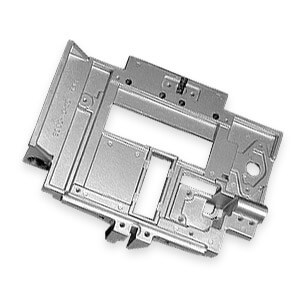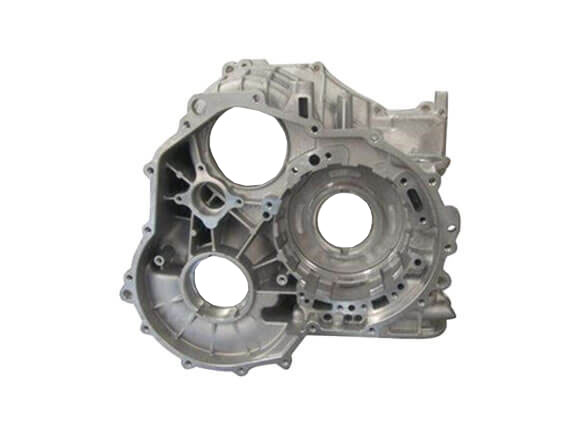Ways to Improve Your Precision aluminum casting Process for Better Results
Aluminum Casting Explained: Secret Realities and Insights for Sector Professionals
Aluminum casting works as an important process in contemporary production, forming elements across various markets. Its varied methods, such as sand and die casting, satisfy various production demands. The unique residential or commercial properties of aluminum alloys enhance their applicability, yet challenges remain in maintaining high quality and performance. Comprehending these aspects is vital for market experts. What are the most recent improvements and best techniques that can further optimize this process?
Review of Aluminum Casting Processes

Trick components of aluminum casting processes include the prep work of molds, which might be made from sand, steel, or ceramic products, depending upon the meant usage. In addition, temperature level control is crucial to ensure appropriate melting and solidification of aluminum.
The casting procedure enables for detailed styles and can accomplish high levels of dimensional precision. When cooled, the castings might go through finishing procedures such as machining or surface treatment to meet particular efficiency requirements. On the whole, aluminum casting works as a flexible manufacturing strategy, properly meeting the varied requirements of numerous industries.
Sorts Of Aluminum Casting Methods
In the domain name of aluminum casting, various approaches are utilized to accomplish different outcomes. Sand casting strategies provide versatility and cost-effectiveness for complicated forms, while die casting processes supply high accuracy and performance for automation. Comprehending these approaches is necessary for picking the suitable method based upon job demands.
Sand Casting Methods
Sand casting techniques represent an essential technique in aluminum casting, where sand is made use of as a mold product to shape liquified metal. This process entails creating a pattern from the wanted component, which is after that put in a sand mixture to form a mold and mildew. The sand is compressed around the pattern, and after elimination, it produces a dental caries in the shape of the part. Molten aluminum is put right into this dental caries, permitting it to cool down and strengthen. One considerable benefit of sand casting is its versatility; it can fit intricate forms and huge parts. Furthermore, the materials utilized are fairly cost-effective, making it an easily accessible choice for various manufacturing applications in the aluminum industry.
Die Casting Processes
Die casting procedures are a noticeable technique for shaping aluminum elements, using high-pressure strategies to compel liquified metal right into specifically crafted mold and mildews. This process is specifically preferred for its capacity to create complicated shapes with tight tolerances and a smooth coating. There are 2 primary kinds of die casting: hot chamber and cool chamber. Warm chamber die casting appropriates for metals with low melting points, permitting faster production prices. Alternatively, cool chamber die casting is perfect for higher melting point metals, calling for a separate melting furnace. Both approaches improve performance and minimize material waste, making them essential in automobile, aerospace, and durable goods industries. Recognizing these procedures assists professionals choose the most appropriate strategy for their particular applications.
Material Residence of Aluminum Alloys

Toughness and Resilience
Stamina and resilience are critical attributes of aluminum alloys that make them suitable for various casting applications. These products show a positive strength-to-weight ratio, permitting for the production of lightweight yet robust parts. When it come to tensile strength, specific aluminum alloys can be crafted to withstand considerable lots without deforming. This residential or commercial property is specifically crucial in markets such as aerospace and vehicle, where efficiency and safety and security are vital. Furthermore, aluminum alloys usually keep their mechanical homes under diverse temperature level problems, guaranteeing constant efficiency. The inherent ductility of these alloys likewise enables reliable shaping during the casting procedure, making it simpler to generate intricate geometries. In general, the toughness and resilience of aluminum alloys add greatly to their extensive use in innovative applications.
Corrosion Resistance Characteristics
While aluminum alloys are valued for their toughness and light-weight residential or commercial properties, their deterioration resistance is an additional important quality that boosts their suitability for different applications. Aluminum naturally forms a safety oxide layer when revealed to moisture, which aids to avoid additional oxidation. This fundamental building makes aluminum alloys particularly beneficial in atmospheres prone to corrosion, such as aquatic and industrial setups. Additionally, various alloy compositions can influence resistance degrees, with certain alloys specifically engineered to boost this characteristic. Therapies like plating can better boost deterioration resistance by enlarging the oxide layer. Understanding the deterioration resistance of aluminum alloys is essential for industry experts when picking products for tasks calling for durability and longevity in tough environments.
Advantages of Aluminum Casting in Production
Aluminum casting offers various benefits in manufacturing, making it a preferred selection for numerous markets. One substantial benefit is its light-weight nature, you could try this out which adds to minimized transportation expenses and enhanced power performance in output. Aluminum's exceptional thermal and electrical conductivity enhances functionality in applications requiring warm dissipation or electrical conduction.
The material's capacity to be cast into complex forms allows for style versatility, lowering the requirement for added machining processes. Additionally, aluminum casting displays remarkable rust resistance, bring about longer product life-spans and lower maintenance costs.

Typical Applications of Aluminum Castings
The convenience of aluminum casting enables its prevalent use throughout different markets. Typical applications include vehicle parts, where lightweight and corrosion-resistant parts, such as engine blocks and transmission housings, enhance vehicle efficiency. In the aerospace field, aluminum castings are used for architectural components, using stamina without including substantial weight.
Furthermore, the electric sector benefits from aluminum spreadings in producing rooms and heat sinks, where thermal conductivity is necessary. The consumer goods market also incorporates aluminum castings in products like cookware, furniture, and decorative items, integrating appearances with functionality.
The building and construction industry employs aluminum spreadings for building aspects, window structures, and fixtures, which offer longevity and design versatility. On the whole, the diverse applications of aluminum castings underscore their significance in contemporary production, adding to advancements in effectiveness and product style throughout several fields.
Advancements and Technological Advancements
As markets continue to progress, advancements in aluminum casting modern technology are changing production processes and item capacities. Advancements in 3D printing and additive production have made it possible for the production of complicated geometries that were previously impossible to achieve with standard approaches. These technologies permit rapid prototyping, lowering lead times and expenses.
In addition, enhancements in mold and mildew layout and materials have actually improved the casting process by increasing performance and minimizing waste. The combination of wise production methods, such as IoT gadgets and real-time data analytics, permits much better monitoring and optimization of production parameters, leading to better outcomes.
Furthermore, developments in aluminum alloys give enhanced strength, corrosion resistance, and light-weight buildings, satisfying the growing demands in vehicle and aerospace industries. Jointly, these developments are not just improving productivity but likewise satisfying review the strenuous standards of modern-day design applications.
Finest Practices for High Quality Control in Aluminum Casting
Making sure high-quality results in aluminum casting requires adherence to ideal methods that include various phases of the manufacturing process. Initially, thorough material examination is important to verify the high quality of aluminum alloys utilized, as pollutants can considerably influence the end product. Implementing exact melting and putting techniques lessens defects; maintaining perfect temperatures protects against oxidation and promotes uniformity.
Mold design plays an essential function; utilizing computer-aided design (CAD) can improve accuracy and minimize human mistake. Regular surveillance of the cooling procedure is critical to stay clear of bending and contraction. Furthermore, utilizing non-destructive screening techniques, such as ultrasonic or X-ray inspections, assists identify inner problems without damaging the components.
Finally, establishing a comments loophole with designers and drivers cultivates constant improvement, guaranteeing that top quality control procedures develop along with technological innovations. By adhering to these best methods, manufacturers can improve the dependability and performance of aluminum castings.
Frequently Asked Concerns
What Are the Ecological Effects of Aluminum Casting?
The environmental influences of aluminum casting consist of significant energy intake, greenhouse gas exhausts, and possible water pollution from factory operations. Furthermore, bauxite mining for aluminum ore can cause habitat devastation and soil degradation.
Just How Does Aluminum Casting Compare to Other Steel Casting Processes?
Aluminum casting usually uses benefits in lightweight parts and corrosion resistance contrasted to other processes, such as iron or steel casting, which might give greater strength however result in much heavier and much less corrosion-resistant items. - Aluminum Foundry
What Prevail Issues in Aluminum Castings and Their Causes?
Typical problems in aluminum spreadings include porosity, shrinking, and additions. Causes commonly come from improper putting techniques, insufficient mold and mildew design, or contamination of the liquified steel, impacting the end product's stability and performance.
What Security Preventative Measures Should Be Taken During Aluminum Casting?
During aluminum casting, vital safety and security precautions include using protective equipment, making certain correct air flow, preserving a tidy office, managing molten metal with care, and complying with well-known methods to reduce dangers of burns, inhalation hazards, and accidents.
Just How Can I Boost the Effectiveness of My Aluminum Casting Procedures?
To improve effectiveness in aluminum casting procedures, one must enhance mold look at here now design, improve product handling, use automated procedures, conduct regular upkeep on equipment, and spend in employee training to boost abilities and productivity.
Numerous techniques exist, aluminum casting includes numerous key procedures that cater to various applications and needs. Secret aspects of aluminum casting procedures include the prep work of mold and mildews, which might be made from sand, metal, or ceramic products, depending on the intended usage. Sand casting techniques stand for a fundamental technique in aluminum casting, where sand is made use of as a mold product to form liquified metal. As sectors continue to develop, innovations in aluminum casting modern technology are changing production processes and product capabilities. Making certain top quality outcomes in aluminum casting needs adherence to finest practices that encompass different stages of the production procedure.